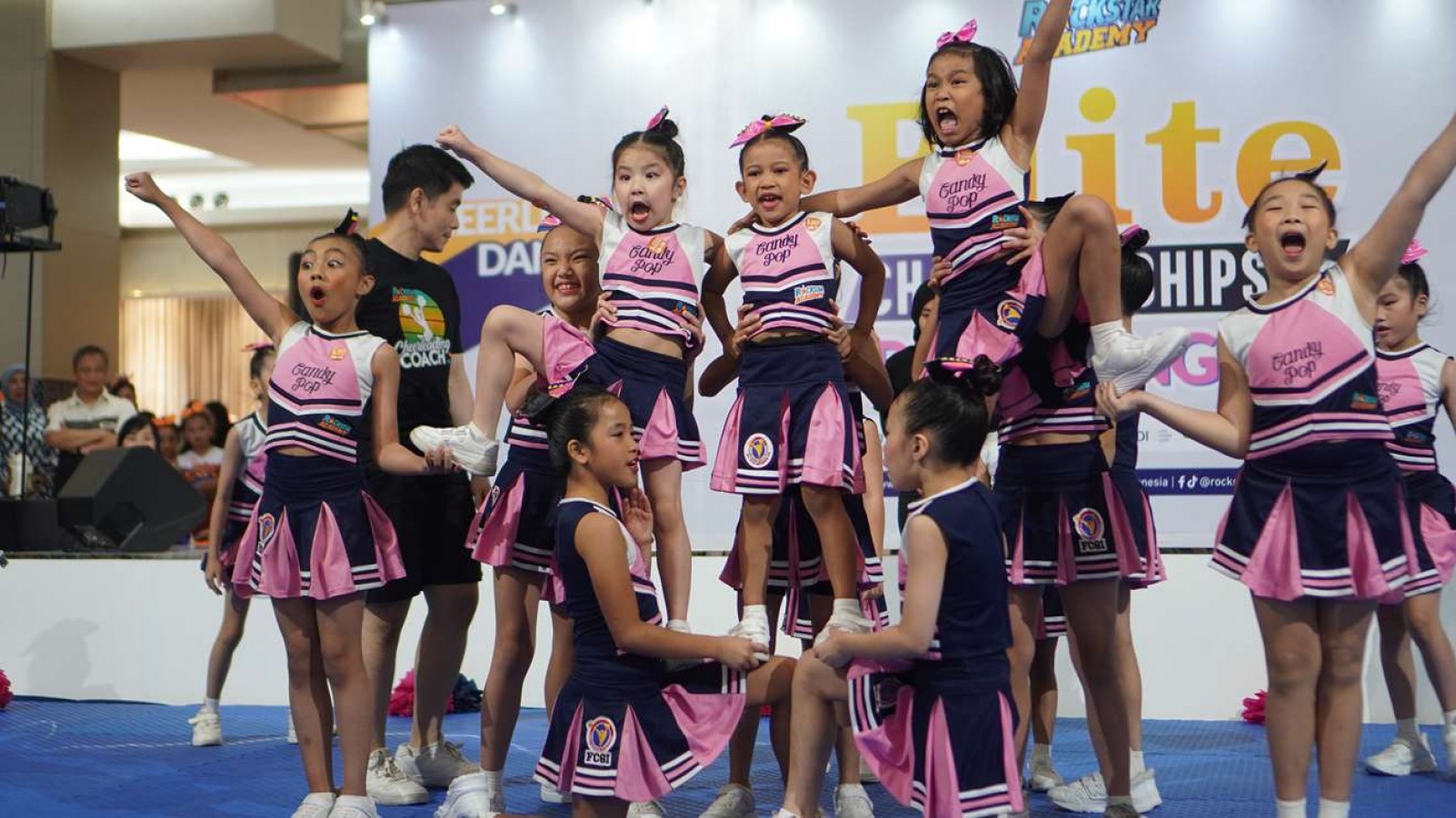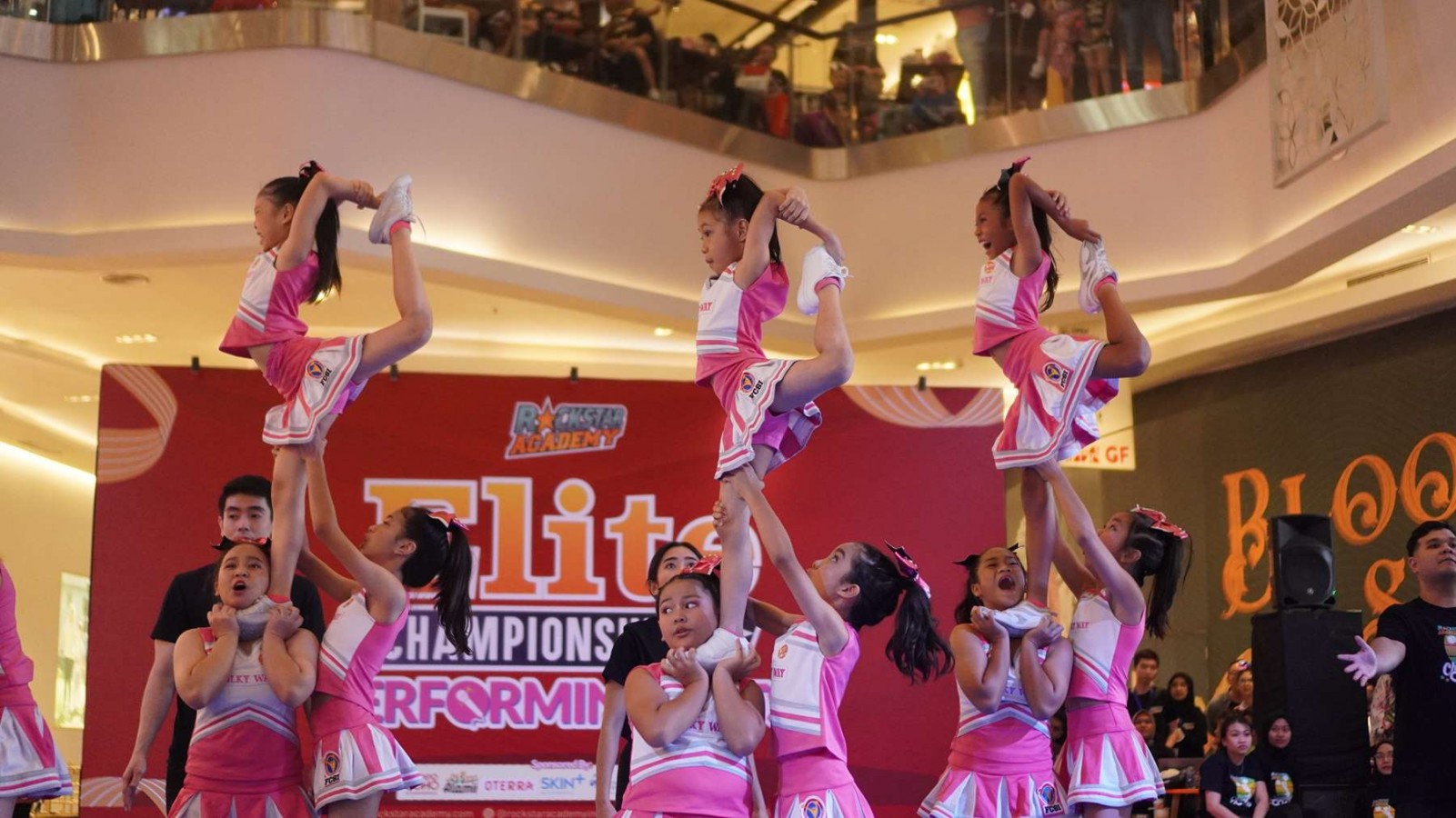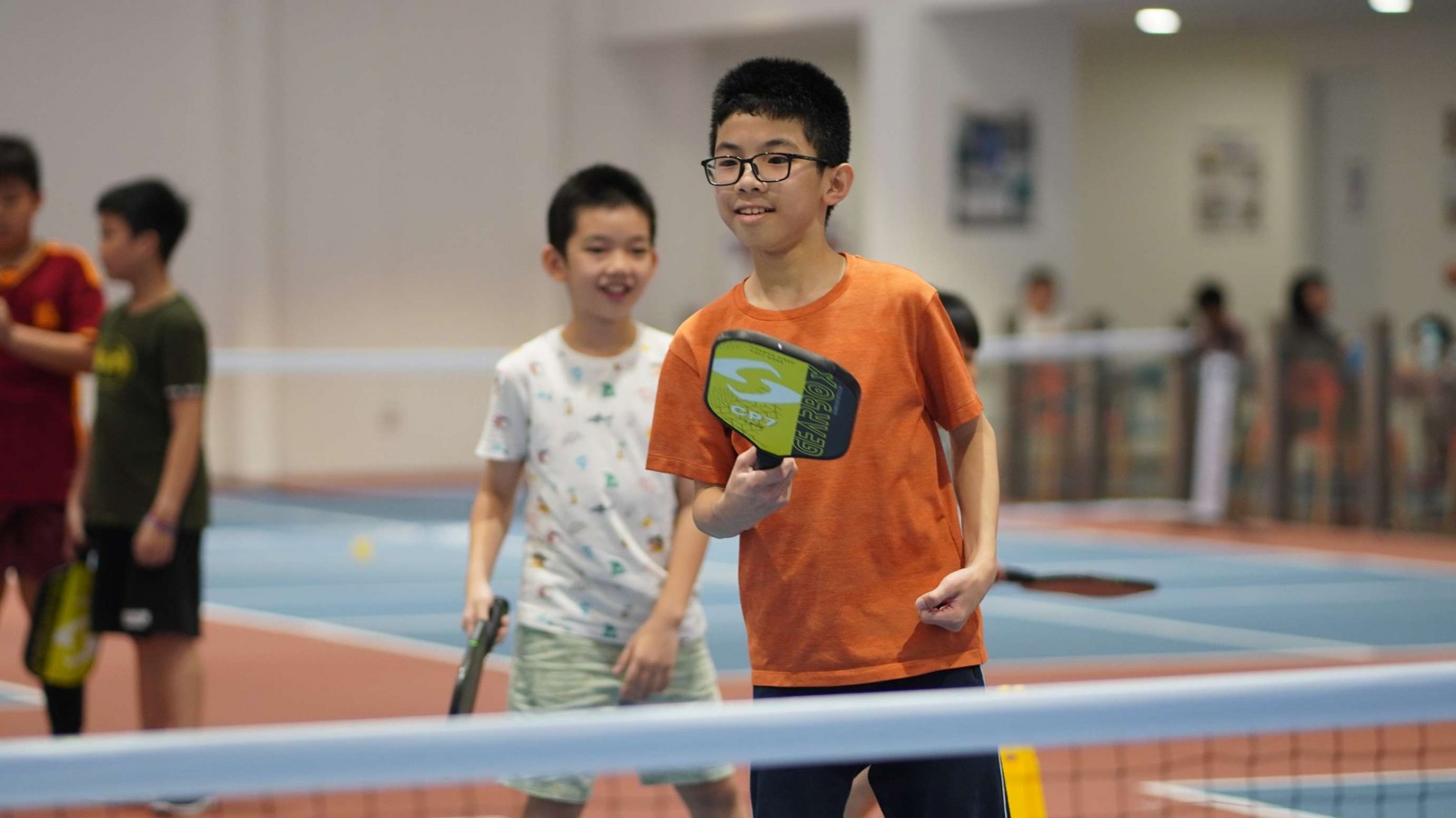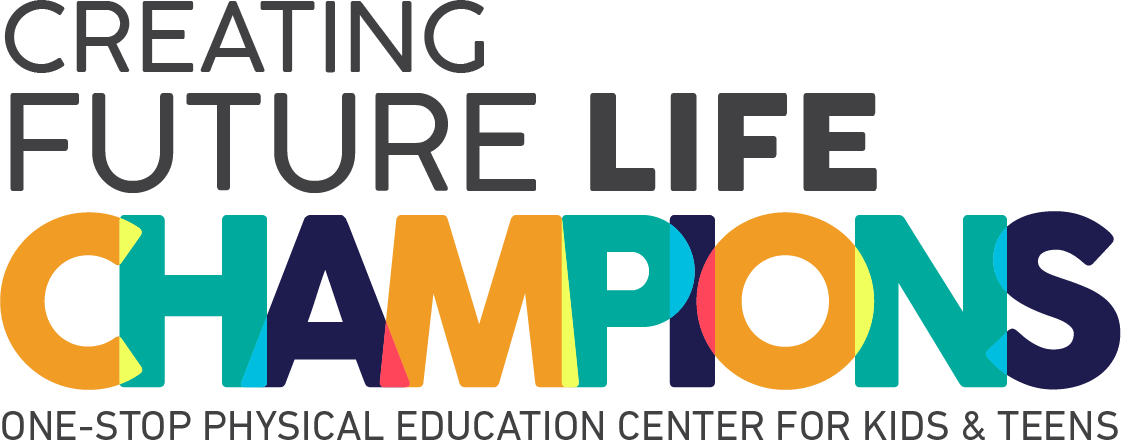Breakdance: From Its History to Its Elements
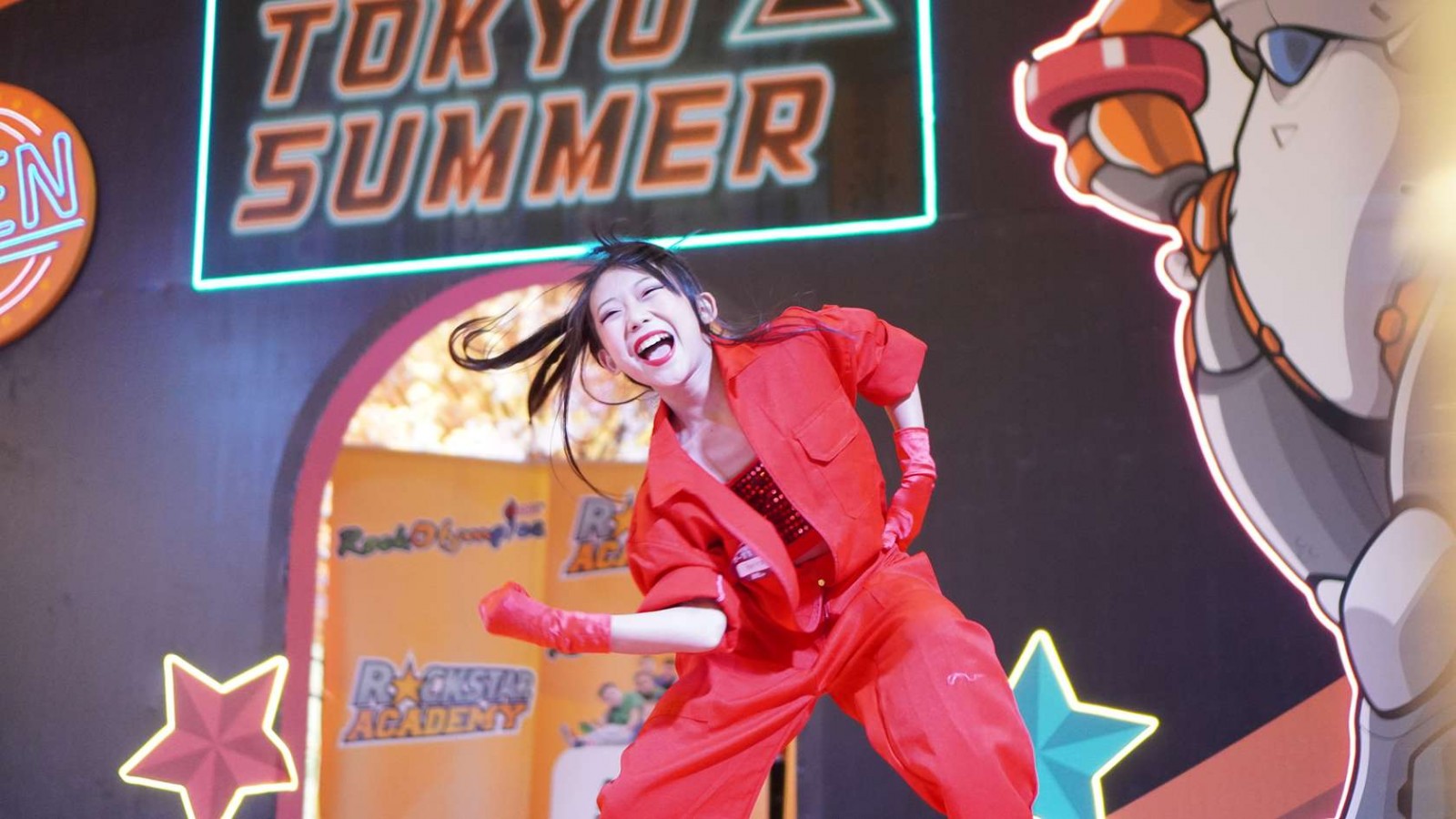
Breakdance is a dynamic and acrobatic form of street dance that has captivated audiences worldwide since its emergence in the 1970s. Rooted in the vibrant hip-hop scene of that era, breakdance combines athleticism, rhythm, and creativity in a mesmerizing display of movement.
From its humble beginnings in Bronx block parties to becoming a global sensation, breakdance has evolved, incorporating various elements that showcase individual style and group dynamics.
This article delves into the rich history and essential elements that define breakdance, offering insights into its enduring appeal and cultural significance.
History of Breakdance
Breakdance originated in the early 1970s in the Bronx, New York City. It is credited to DJ Kool Herc's innovative use of breaks, percussive sections of funk and soul songs, to energize dancers.
By the late 1970s, breaking became integral to hip-hop culture, flourishing among Black and Puerto Rican youth. The formation of the Rock Steady Crew in 1977, featuring pioneers like Richard "Crazy Legs" Colón and Kenneth "Ken Swift" Gabbert, solidified its place.
The early 1980s saw breaking surge into the mainstream through films like Flashdance and Breakin', sparking global popularity and paving the way for international competitions.
Today, it is culminating in its inclusion in the 2024 Olympics, highlighting its evolution from local street culture to a global phenomenon.
Elements of Breakdance
Breakdancing is like a dance puzzle with different pieces that fit together to create awesome moves. Here are the main pieces, or elements, that make up breakdancing:
1. Toprock
This element refers to the upright dance moves performed while standing. Toprock often serves as an introductory phase in breakdancing routines, allowing dancers to showcase their personal style, rhythm, and engagement with the music. It sets the tone for the dance and engages the audience.
2. Downrock
Also known as footwork or floorwork, downrock involves intricate movements performed close to the ground. Dancers execute fast-paced foot patterns, spins, and transitions while maintaining a low stance.
Downrock demonstrates agility, creativity, and technical skill as dancers navigate complex sequences with fluidity and precision.
3. Drops
Drops in breakdancing refer to sudden and dramatic movements where dancers transition from standing or elevated positions to the floor.
Drops add dramatic effect to performances, emphasizing power and control as dancers execute these dynamic transitions seamlessly within their routines.
4. Power Moves
Power moves are acrobatic and physically demanding maneuvers that highlight strength, balance, and athleticism.
These moves include spins, flips, and rotations performed on the ground, showcasing the dancer's ability to generate momentum and maintain control through complex sequences of rapid movements.
5. Freezes
Freezes are static poses or positions held briefly during a breakdancing routine. Dancers typically transition into freezes to punctuate their movements or sequences which emphasize balance, strength, and creativity.
Common freezes include handstands, headstands, and other striking poses that require stability and control.
The Inspiration Behind Breakdancing
The inspiration behind breakdancing is multifaceted, drawing from various cultural influences and social contexts.
Initially rooted in the energetic performances of musicians like James Brown, breakdancing evolved from DJs' innovative use of breaks in music, which provided dancers with rhythmic opportunities to showcase their skills.
Elements from diverse disciplines such as gymnastics, the Lindy Hop, capoeira, and disco were integrated into breakdancing, enriching its repertoire of moves and styles. Beyond its artistic origins, breakdancing also has a historical backdrop that reflects its grassroots beginnings in urban communities.
Some accounts suggest that early breakdancing emerged as a non-violent means for rival street gangs to settle disputes. Instead of physical conflict, dancers from opposing groups would compete through dance battles, where creativity, skill, and innovation determined the winner.
This competitive aspect not only fostered the feeling within communities but also elevated breakdancing into a respected form of expression and cultural identity.
The Music Used in Breakdancing
Music plays a pivotal role in breakdancing, providing the rhythmic foundation and energy that drives dancers' performances. Originally, DJs in the early days of breakdancing borrowed heavily from genres like funk, jazz, soul, disco, electro, and R&B to create the beats that b-boys and b-girls danced to.
These genres were chosen for their dynamic rhythms and percussive elements, particularly the "breaks", sections of songs where the music suddenly intensifies and becomes rhythmically compelling.
The DJ's skill lay in identifying these breaks and looping them together to create extended sequences of uninterrupted rhythm, known as breakbeats. This practice allowed dancers to showcase their moves during these rhythmic interludes, thus giving birth to the term "breakdancing."
As breakdancing evolved, DJs also began incorporating samples from diverse musical sources, which were then manipulated and combined to create new and innovative sounds. Here are several type of musics used in breakdance:
A. Funk Music
One of the foundational sounds of breakdancing comes from funk music, particularly tracks by James Brown, such as "Get on the Good Foot" and "Give It Up or Turnit a Loose."
B. Early Hip-Hop
Known as the father of hip-hop, Kool Herc popularized the use of breaks from funk records, extending the instrumental sections where dancers could showcase their skills. His use of two turntables to loop breaks gave rise to the term "breakdancing."
Another pioneer, Grandmaster Flash further developed the art of DJing, using scratching and mixing techniques that became central to hip-hop music and breakdancing.
C. Classic Tracks
Known as the breakdancing anthem, "Apache" by The Incredible Bongo Band ia energetic breakbeat is a staple in breakdancing circles.
Another classic, "It's Just Begun" by The Jimmy Castor Bunch also driving beat and lively horns make it a favorite among dancers.
D. Modern Tracks
"Rockit" by Herbie Hancock, with its innovative use of electronic sounds and turntable scratching, bridges the gap between funk and hip-hop.
Another track, "Planet Rock" by Afrika Bambaataa & The Soulsonic Force combines hip-hop beats with electronic music, expanding the sonic palette for breakdancers.
Let Your Skills Shine on the Dance Floor!
Breakdance continues to evolve, with new styles, techniques, and innovations emerging constantly. Its fusion of athleticism, creativity, and cultural expression ensures that breakdance will remain a vibrant and influential art form for years to come.
For those seeking to master captivating dance moves and take their skills to the next level, Rockstar Academy's Dance Program offers an unparalleled opportunity.
As a leading Sports & Performing Arts Academy, we provide comprehensive training in various dance styles, guided by experienced instructors dedicated to nurturing each student's potential.
Our program includes preparation for a prestigious Dance Recital, Dance Elite Championships and RockOlympics, giving students the chance to showcase their talent and compete at high levels.
Best of all, we are currently offering a free trial class, allowing you to experience the exceptional quality of our dance program firsthand. Join us at Rockstar Academy and take the first step toward your dance journey today!
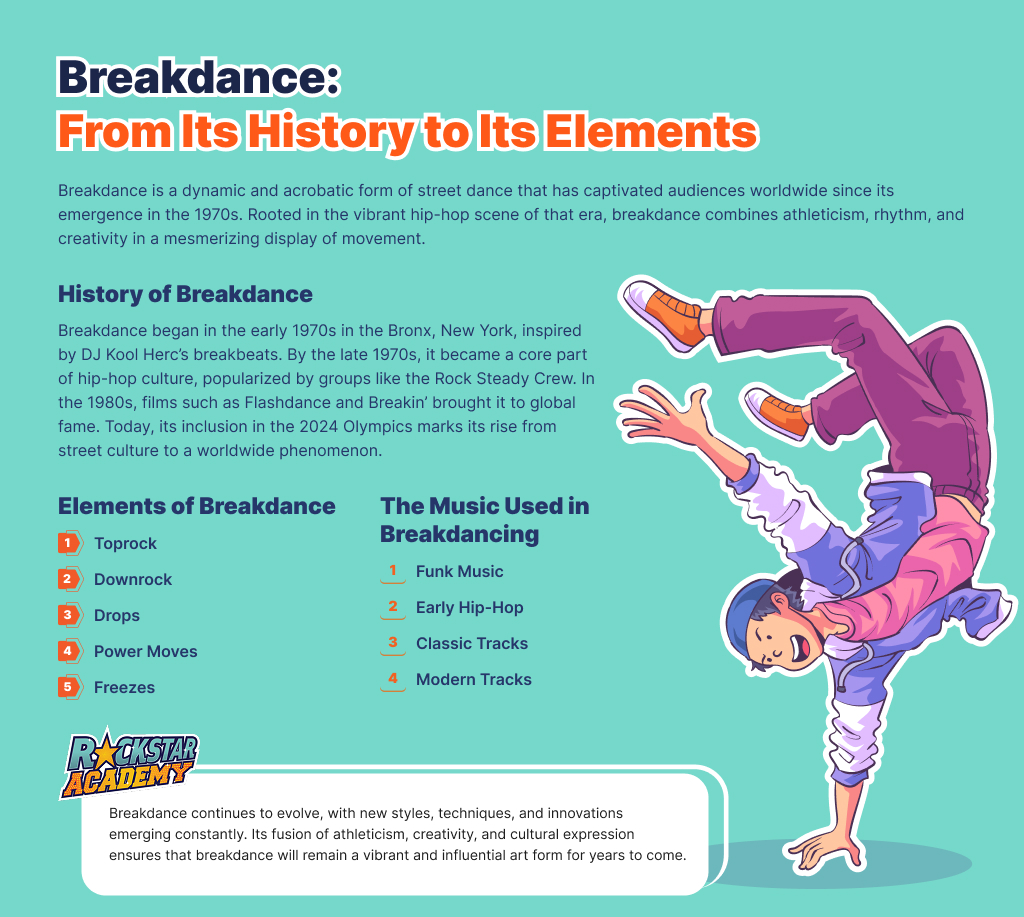
FAQ
What is breakdancing?
Breakdancing is a dynamic style of street dance that includes athletic moves, footwork, spins, and acrobatics performed to music, often within the hip-hop genre.
How did breakdancing start?
Breakdancing began in the early 1970s in the Bronx, New York City, pioneered by DJ Kool Herc, who extended music breaks for dancers to showcase their skills.
